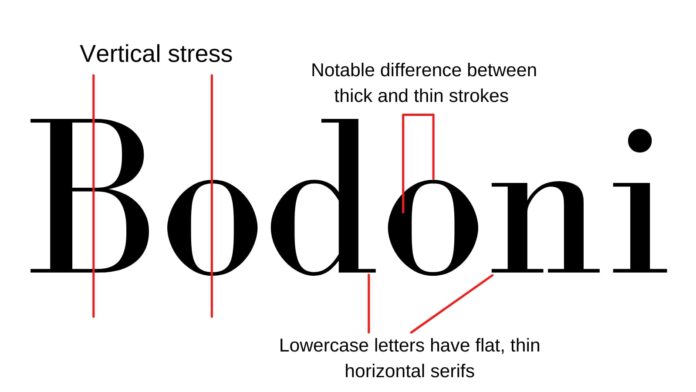The majority of the imagery we see in advertisements and other marketing materials across all platforms depend on fonts. In the past, fonts were only employed in printed products like books, pamphlets, newspapers, and other magazines. Today’s digital screens have significantly changed the typography industry.
But why should all modern marketers be careful while selecting fonts? Simply said, why is it crucial to choose the right fonts?
The Value of Picking the Right Fonts
1. Highlight Your Brand’s Individuality
Fonts have a crucial role in corporate branding. You can select a certain typeface to emphasize your brand’s uniqueness. Comic fonts, for instance, can be used in the logos and marketing materials of toy firms.
2. Promote brand awareness
Your target audience will be able to recognize and recognize your brand more easily if the same typefaces are consistently used. Just by looking at the typefaces used in your logo and other images, they may quickly identify your company. Your clients’ ability to trust your brand can be aided by a carefully chosen font and its consistency throughout all of your brand’s pictures.
3. Persuade Consumers to Make Purchases
The potential clients of a brand may be impacted by the personalities of fonts. This in turn helps to affect the buying decisions of customers. A lot of individuals rely their purchasing choices on a brand’s aesthetic appeal.
4. Maintain Attention
Although people’s attention spans are shortening quickly, typography, or the right kind of modern fonts, could be your tool for grabbing their attention. You can hold their attention while they read your blog or website pages by using a legible font.
4. Allow Content Scanning
For easier page content scanning on your website, selecting the right font is also crucial. Readers should be able to scan it easily. People often follow a regular path when browsing websites.
Therefore, it is crucial to position headings, body text, and other web page content in the right font. Once you’ve established why typography is so important to your company, you should carefully choose the fonts you use.
In today’s digital world, fonts are widely used on the internet. This is a result of the overwhelming majority of advertising and brand promotion occurring on digital platforms. As a result, there are now hundreds more fonts available than ever before.
Users can now easily obtain the majority of fonts online. They struggle with typeface selection because there are thousands of options available. However, remember the principles so that you can pick the right fonts.
These Font Types Should Be Considered for Your Brand
1. Sans Serif Fonts
The little feet at the extremities of the letterforms give serif typefaces their name. The letters’ top and bottom serifs are clearly evident. The 15th century saw the introduction of regular use for these types. There are several different types of serifs. Old-style serifs, classical and neo-classical serifs, transitional serifs, and diverse serifs all fall under this group. Each of these serifs has a different weight, form, and ascender heights.
2. Fonts in Slab Serif
When addressing serif fonts, slab serif needs to be specifically mentioned. Unlike their more conventional siblings, these serifs are enormous and gorgeous. Usually, designs that demand for a rough appearance use slab serifs. These fonts are widely used by marketers for outdoor-related businesses.
3. Sans Serif fonts
Fonts without serifed feet are known as sans serif fonts. Midway through the nineteenth century, these fonts were first employed. Nevertheless, they are common in today’s world. Sans serifs are gaining popularity because of their crisp, contemporary appearance. These have simpler shapes, making them easier to read.
They are utilized on the majority of digital screens due to their usability and readability. They are frequently preferred for headlines and blogs when it comes to usage. They are helpful for lengthy paragraphs as well, though.
4. Script Fonts
Script typefaces are intended to resemble handwriting, and they are frequently employed to convey a laid-back and welcoming company personality. You can pick one of these relaxed and informal style of font. Formal script typefaces should be used for copying the handwriting of 17th and 18th century masters. The flourishes and curls that extend from the serif or swashes make these typefaces appear ornamental.
Casual scripts resemble a painter’s creations. These typefaces are easier to read since there are a lot less swashes. Companies that aim to communicate a more relaxed attitude in their logos and posters frequently employ these typefaces.
5. Handwriting-inspired fonts
Casual script fonts and handwritten fonts are different. These fonts can also be categorized as sans serif since they don’t have the structure of normal script letterforms. There are numerous formats for these typefaces.
The design of posters, book covers, and logos frequently incorporates handwritten fonts. This is because of the unique creative flair they add to a design. Choose these fonts when you want to give your design charm and personality.
6. Animated Fonts
Cartoons, speech bubbles, and comics are frequently created with comic fonts, as the name suggests. You can also select typefaces that are extremely legible and easy on the eyes. However, keep in mind that comic-style fonts are overused. This means you should use a distinct font style to stand out.
7. Fonts for Display
Posters, billboards, packaging, and book jackets are the most common places to see display fonts. These headline fonts are used to catch the attention of the viewer. They are commonly used in sizes more than 14 points, which is why they are referred to as ”display”. These are often regarded as a suitable font option for setting the tone of a design.
8. Vintage Fonts
Retro fonts are a good option if you want to give your design an ‘old fashioned’ look. These fonts are available in serif, sans serif, and script styles. These fonts are commonly found in classic posters, logos, and packaging designs.
9. Calligraphic Fonts
The calligraphy font is well-known for its distinctive creative lettering. Flat-edged pens were employed in ancient times to make these fonts as part of the writing process. The thickness of the lines was heavily influenced by the movement and direction of the pen. Today, calligraphic fonts are often employed to create formal invitations and letters that have the appearance of great art.
10. Fonts with Stencils
The stencil typefaces are distinguished by their use of capital letters with breaks in the face, which serves as their primary identifier. The typeface also has rounded borders and thick main strokes.
When they were initially invented in 1937, they were used to set newspaper headlines. Stencil fonts are now widely used in a range of design items such as public signage, labeling, graffiti or street art, and posters.















